Have you seen the famous image of supermassive black hole M87? If not, click here to read about this groundbreaking moment of astronomy, then come right back!
But if you do already know about that incredible image, we're here to say that it was only the beginning.
Astronomers have been examining the lessons of that picture further. Using the power of the Event Horizon Telescope (the huge array, or group, of global telescopes that took the original M87 image), they have found evidence of polarization in that picture. This has allowed them to make the polarized black hole image that you see at the top of the post.
What does that mean? Why is it important? The answer is complicated (as you might expect!). But in short, it is giving scientists evidence of the powerful forces that surround supermassive black holes, even shooting huge jets of energy deep into space.
Allow us to investigate!
Polarizing stuff
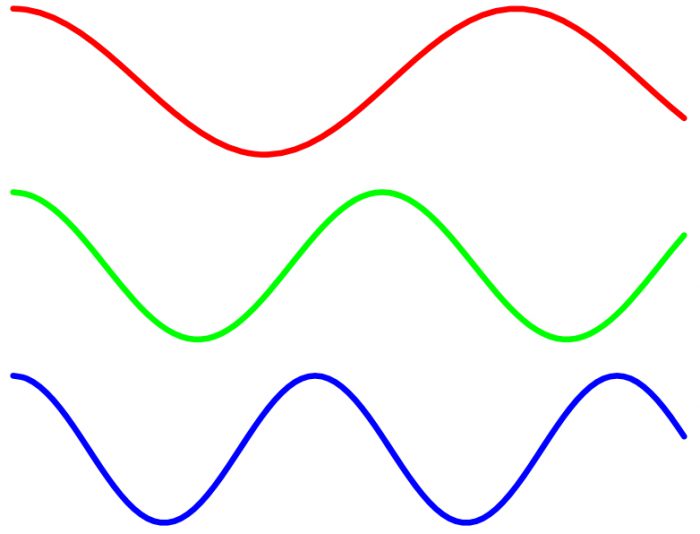
Light particles travel as waves. Depending on the length of those waves, we see them as different colours ... or not at all. (Wikimedia Commons)
What we call 'light' is actually waves of electromagnetic radiation. Some of these waves we can see with our eyes, a.k.a. visible light. Others—such as X rays, gamma rays, UV rays—we can't. But all of them travel as beams, stretching on forever unchanged. Unless something gets in their way.
Polarization happens when something changes the direction of these waves as they move along so that they are focused in a certain direction. It sounds complicated, but we use polarization all the time, especially as a filter.
For example, polarized sunglasses filter out the sunny glare off of surfaces like water or roads. They don't just make everything darker—instead, they remove the types of light waves that are most difficult for human eyes to handle.
They remove certain light and leave the rest behind.
Magnetic force
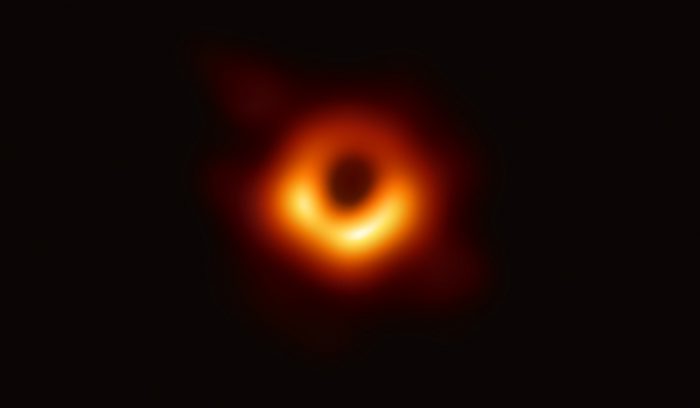
The original, non-polarized image of M87. (EHT Collaboration)
In space, one of the great polarizers of light are magnetic fields. These powerful forces twist and pull light particles, distorting them. In their own way, they act as a filter, too, changing what we see of a particular space phenomenon.
So how does this apply to that picture of M87? Why are scientists excited?
The twisted light that we see in the picture proves the existence of a super strong, swirling magnetic field around the black hole. Like the sunglasses in front of the Sun, the magnetic field changes what we see.
And its presence is helping answer a huge question about certain black holes like M87.
If all they do is suck up matter, why do they also shoot out huge long jets of energy?
Quasar question answered?
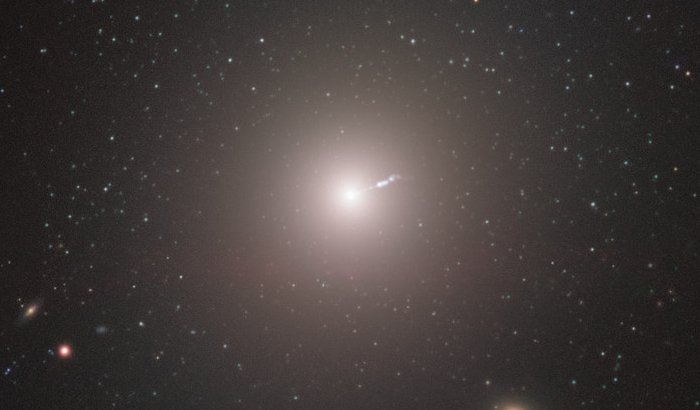
A picture of M87's jet. The polarized black hole image reveals the magnetic field that astronomers think causes this jet. (ESO)
The supermassive black hole M87 is also a quasar. This means that it has a huge swirling mass of glowing matter around it called an accretion disk. And it also shoots a jet of energy out into space at 99 percent the speed of light.
Scientists have known about quasars and their jets for a long time. They've also had their theories on what caused these phenomena: A super strong magnetic field. This is the force that allows some matter and energy to resist getting sucked into the black hole. Instead, some of it hangs around in the accretion disk—and some of it is blasted out into the cosmos as a jet!
Proof!
What this polarized black hole image brings is visual evidence of that magnetic field. It's not a theory anymore. It's really there! That's what all of this excitement is about.
Proof!
Sure, that polarized image might not be as mindblowing to look at as this artist's illustration of a quasar below...
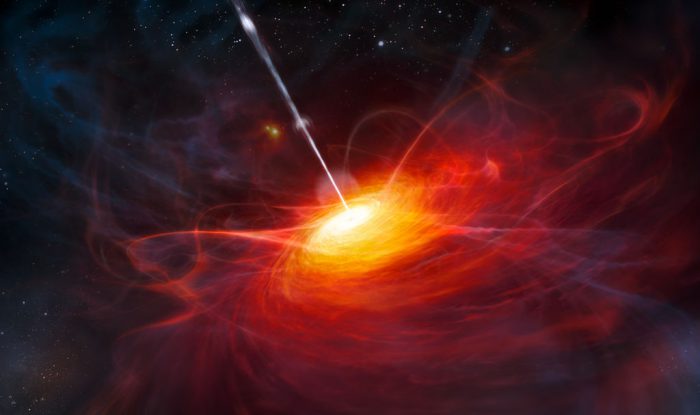
(Wikimedia Commons)
But like the original 2019 image of M87, it is an image produced by real data and observation. Not just theories and guesses.
For a scientist, that makes all the difference in the universe!
For more on it, check out this video below from SciTech Daily.
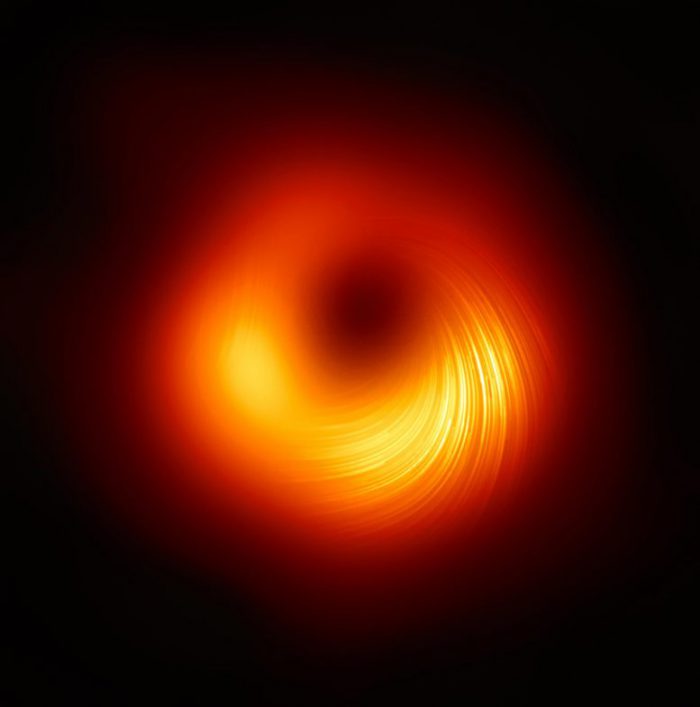 An artist's conception of the polarization around M87. The lines show the effect of a magnetic field on the black hole. (EHT Collaboration)
An artist's conception of the polarization around M87. The lines show the effect of a magnetic field on the black hole. (EHT Collaboration)









